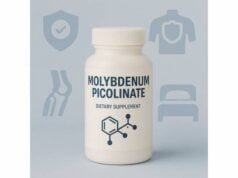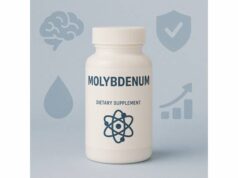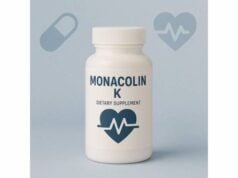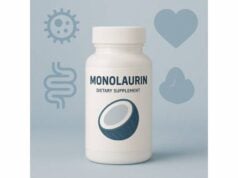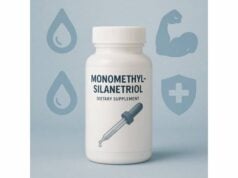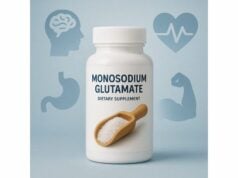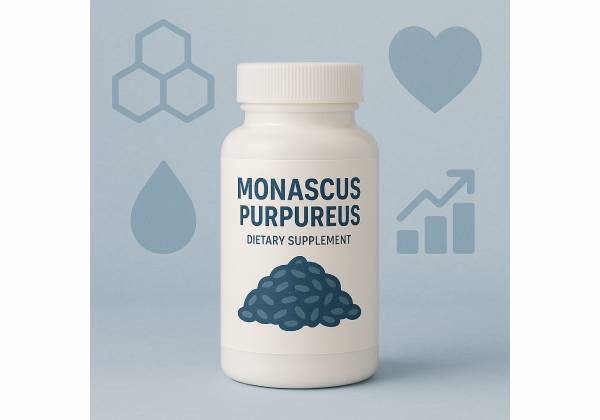
Monascus purpureus is the food-fermenting fungus behind red yeast rice (RYR)—a deep ruby condiment and traditional ingredient that also yields bioactive compounds. The best known is monacolin K, chemically identical to the statin lovastatin, which can lower LDL (“bad”) cholesterol. But Monascus does more than make statins: it produces colorful pigments used as natural food colorants and distinctive orange-yellow molecules (like monascin and ankaflavin) under study for metabolic and anti-inflammatory effects. Because these metabolites are pharmacologically active, benefits sit alongside real safety and quality issues, especially citrinin, a potential kidney toxin that can appear when fermentation is poorly controlled.
This guide translates the science into practical choices. You’ll learn what Monascus purpureus is, how it works, who might benefit from red yeast rice, how to choose and dose products responsibly, what factors shape results, the most common mistakes to avoid, and the key safety rules and regulatory context. Wherever you live, you’ll finish with a clear plan to use Monascus-derived products wisely—or to consider alternatives better matched to your risks, preferences, and goals.
Quick Facts
- Lowers LDL cholesterol about 15–30% on average when standardized for monacolin K and combined with lifestyle changes.
- Typical standardized intake: 3–10 mg monacolin K/day from red yeast rice; follow local limits (some regions cap monacolins at ≤3 mg/day).
- Quality matters: choose citrinin-tested products and verified monacolin content; potency varies widely.
- Avoid if pregnant or breastfeeding, with active liver disease, or when already taking a statin or strong CYP3A4 inhibitor.
Table of Contents
- What is Monascus purpureus?
- Benefits and how it works
- How to use and dosage
- Variables that affect results
- Mistakes and troubleshooting
- Safety, evidence, and regulation
What is Monascus purpureus?
Monascus purpureus is a filamentous fungus used for centuries to ferment rice into red yeast rice (RYR), a culinary staple prized for its color, aroma, and umami depth. Traditional names (e.g., angkak) reflect its wide use across East and Southeast Asia. During solid-state fermentation, Monascus creates three categories of biologically relevant molecules:
- Monacolins (A–L): a family of statin-like compounds that inhibit HMG-CoA reductase, the rate-limiting enzyme in hepatic cholesterol synthesis. Monacolin K is the most clinically important because it is structurally and functionally identical to lovastatin.
- Azaphilone pigments: red (rubropunctamine), orange (monascorubrin), and yellow (monascin, ankaflavin) pigments that color foods and may exert antioxidant and anti-inflammatory actions in experimental models.
- By-products: including citrinin, an unwanted mycotoxin that can arise if fermentation is poorly controlled; rigorous producers minimize or eliminate it through strain selection and quality testing.
Why people use it today
- Cardiometabolic support: Standardized RYR extracts can lower LDL-C and non-HDL cholesterol, offering a “nutraceutical” option for people who want a statin-like effect under supervision.
- Culinary and natural colorant roles: Food producers and home cooks use Monascus pigments for a stable, heat-tolerant red hue without synthetic dyes.
- Emerging research leads: Monascin and ankaflavin are being studied for insulin sensitivity, fatty liver mechanisms, and inflammatory signaling—promising but not yet clinical practice.
How it’s made
Traditional RYR uses steamed rice inoculated with M. purpureus, fermented in warm, humid conditions, then dried and milled. Modern nutraceuticals often standardize the extract to a target monacolin K content and test for citrinin. Because production variables (strain, time, temperature, moisture, aeration) strongly influence yield and impurity profiles, quality systems determine whether you get a safe, effective product or an inert—or contaminated—one.
Important distinctions
- The microbe vs. the supplement: Monascus purpureus is the organism; red yeast rice is the fermented food; monacolin K is a specific compound within it.
- Food vs. drug regulations: Many regions regulate high-monacolin products like medicines. Others permit low-monacolin foods with warnings. This shapes what you can legally buy and the labeled daily amount.
In short, Monascus purpureus is a fascinating food microbe with pharmacology. That dual identity brings both opportunity and responsibility—especially around standardization, testing, and informed use.
Benefits and how it works
1) LDL-cholesterol lowering (core benefit)
Monacolin K is a competitive inhibitor of HMG-CoA reductase. By damping hepatic cholesterol synthesis, the liver upregulates LDL receptors and clears more LDL particles from blood. Across randomized trials of standardized RYR:
- LDL-C falls on average 15–30% after 8–12 weeks, with larger absolute drops in those starting higher.
- Non-HDL-C (a better predictor for mixed dyslipidemia) declines in parallel with LDL-C.
- Triglycerides often fall modestly; results improve when diet quality and weight management also improve.
- ApoB tends to decrease, reflecting fewer atherogenic particles.
2) Additional lipid and vascular effects (secondary)
Some studies report small improvements in hs-CRP and endothelial function, but these signals are inconsistent and generally weaker than LDL-C changes. As with prescription statins, the main clinical value of Monascus products is ApoB-containing lipoprotein reduction, not broad “anti-inflammatory” effects.
3) Potential roles of monascin and ankaflavin (emerging)
These yellow azaphilones can interact with metabolic and redox pathways in preclinical models, including PPAR signaling and Nrf2-mediated antioxidant responses. Translational evidence remains early. They are best viewed as interesting adjuncts in RYR, not proven clinical agents.
4) Culinary and functional food benefits
Beyond supplements, Monascus pigments provide stable, heat-resistant coloration for meats, sauces, and fermented products. When produced safely (no citrinin), this offers clean-label appeal. Culinary doses are usually too low to produce medical effects but contribute to cultural food traditions and product innovation.
What results can an individual expect?
- If you use a standardized, citrinin-tested product delivering 3–10 mg monacolin K/day and pair it with dietary fiber (oats, barley, beans), unsaturated fats (olive oil, nuts), and regular activity, a 20–30% LDL-C reduction is a reasonable expectation within 8–12 weeks.
- If your product is under-powered (trace monacolin K) or you take it inconsistently, results will be smaller and unpredictable.
Who benefits most?
- Adults with mild to moderate LDL-C elevation who prefer a nutraceutical approach and can follow supervision and monitoring.
- People with previous statin intolerance exploring alternatives; note that monacolin K is a statin molecule, so intolerance can still occur.
- Individuals motivated to combine lifestyle changes with a modest pharmacologic nudge.
Who likely needs more than Monascus?
- Those with very high LDL-C, familial hypercholesterolemia, established ASCVD, or diabetes with multiple risk factors often require guideline-directed prescription therapy with proven outcome data.
Bottom line: Monascus purpureus–derived monacolin K can reliably lower LDL-C when standardized and used correctly, but its benefits and risks mirror statins and depend on product quality and clinical context.
How to use and dosage
Forms you’ll see
- Red yeast rice capsules/tablets: May list total monacolins or specifically monacolin K. High-quality labels disclose exact content and citrinin status.
- Culinary powders: Intended for cooking/seasoning, not standardized for medical use.
- Combination nutraceuticals: RYR plus berberine, artichoke extract, policosanol, plant sterols, or CoQ10—convenient but variable in evidence and dosing.
Typical intake ranges (adults)
- Monacolin K: 3–10 mg/day in many clinical studies. Some jurisdictions limit total monacolins to ≤3 mg/day in foods/supplements; always follow local rules and clinician guidance.
- Red yeast rice extract: Often 1,200–2,400 mg/day split into 1–2 doses, but potency depends on standardization—milligrams of extract are meaningless without monacolin numbers.
How to start (practical steps)
- Check medications for interactions (antifungals, macrolides, certain antivirals, cyclosporine, verapamil/diltiazem, and grapefruit can raise exposure; fibrates and high-dose niacin increase myopathy risk).
- If appropriate where you live, begin with a lower dose (e.g., 2–3 mg monacolin K/day) to assess tolerability.
- Take with an evening meal, reflecting overnight hepatic cholesterol synthesis (unless your product specifies otherwise).
- Build a dietary base: add viscous fiber (oats, barley, beans), nuts/seeds, and extra-virgin olive oil; trim refined carbs and trans fats.
- Recheck lipids after 8–12 weeks; monitor symptoms.
- Adjust: Reinforce lifestyle, consider a different product or therapy if response is inadequate or side effects occur.
Special situations
- Older adults: Start low, review interactions, and monitor for muscle symptoms.
- Hypothyroidism (untreated): Correct thyroid function first; hypothyroidism increases statin-related myopathy risk.
- Athletes/physically demanding jobs: Report any unusual muscle pain or weakness promptly; consider baseline CK if you’ve had prior statin myopathy.
- Vegetarian/vegan users: Verify capsule materials and excipients.
How long should you take it?
Lipid-lowering is chronic risk management. If you tolerate the product and it meaningfully lowers ApoB/LDL-C, sustained use alongside lifestyle measures is reasonable, with periodic reassessment. If diet and exercise alone later keep LDL-C in target, you may taper or stop in consultation with your clinician.
What not to do
- Don’t combine with a prescription statin unless specifically directed.
- Don’t self-increase above labeled or legal limits to chase larger drops—adverse effects rise without guaranteed benefit.
- Don’t use during pregnancy or breastfeeding—cholesterol synthesis is essential for fetal/infant development.
Variables that affect results
1) Product standardization and testing (biggest driver)
Monacolin content varies widely across commercial products. Two bottles labeled “red yeast rice” can differ by ten-fold in active monacolin K. Without precise standardization and third-party testing, your LDL-C outcome is guesswork. Testing should verify monacolin K content and citrinin status (“not detected” or below strict limits).
2) Citrinin control
Citrinin can appear if fermentation is poorly controlled. It’s nephrotoxic in animals and a marker of sloppy manufacturing in people. You can’t smell or taste it; only lab assays tell the truth. Choose brands that publish citrinin test results or carry credible certifications.
3) Diet pattern
- Amplifiers: soluble fiber (oats, barley, psyllium, beans), nuts, seeds, plant sterols, extra-virgin olive oil, and weight loss if needed.
- Blunters: high refined carbohydrate intake, trans fats, excess alcohol, low fiber.
Combining RYR with a Mediterranean-style pattern produces the most consistent results.
4) Adherence and dose
Daily, long-term use matters. Missing doses or using an under-dosed product shrinks LDL-C reductions. Where legally permitted and medically appropriate, titration within the studied range can help, but never exceed regional limits or clinician instructions.
5) Pharmacogenetics and physiology
Variants in transporters (e.g., SLCO1B1) and metabolic pathways can influence statin exposure and myopathy risk. Hypothyroidism, vitamin D deficiency, frailty, and heavy alcohol use can raise susceptibility to muscle symptoms. Correct what you can; personalize the plan.
6) Drug interactions
- CYP3A4 inhibitors (azole antifungals, macrolide antibiotics, HIV/HCV protease inhibitors) can raise monacolin K exposure.
- Grapefruit (juice or large amounts of fruit) can increase levels; avoid with RYR.
- Other lipid agents (fibrates, high-dose niacin) add myopathy risk.
- Anticoagulants/antiplatelets: use caution and monitoring if co-use is considered medically necessary.
7) Health status and baseline risk
People with active liver disease, chronic kidney disease, or prior statin-associated rhabdomyolysis are poor candidates for RYR. Those with high baseline cardiovascular risk gain more from guideline-directed, outcome-proven therapies than from an unstandardized supplement.
8) Lab timing and targets
Check lipids at 8–12 weeks to gauge effect; consider ApoB for particle count. Define targets up front (for example, ≥50 mg/dL LDL-C reduction for intermediate risk, or guideline-specified goals for secondary prevention) so you know when to escalate therapy.
9) Expectations
RYR isn’t magic. Expect gradual improvements over months. Pair it with diet, movement, sleep, and blood pressure/glucose control, and track numbers to stay honest about what’s working.
Mistakes and troubleshooting
Common mistakes
- Buying by brand name, not content.
“Red yeast rice” on the label doesn’t guarantee an effective dose. Fix: pick products that quantify monacolin K and publish recent citrinin tests. - Doubling up with a statin.
Since monacolin K = lovastatin, adding RYR to a prescribed statin raises myopathy risk. Fix: do not stack unless a clinician explicitly directs and monitors you. - Ignoring interactions.
Azole antifungals, clarithromycin, protease inhibitors, and grapefruit can spike exposure. Fix: pause RYR during interacting prescriptions; avoid grapefruit; review meds proactively. - Exceeding local limits.
Some regions cap monacolins at ≤3 mg/day in foods/supplements due to safety reports. Fix: obey your jurisdiction’s rules and your clinician’s plan. - Chasing “natural” claims over quality data.
“Natural” says nothing about standardization or safety. Fix: favor transparency—lot numbers, certificates of analysis, and third-party verification. - Skipping lifestyle foundations.
Without fiber, healthy fats, and regular movement, you give away easy gains. Fix: add 5–10 g/day of viscous fiber from foods or psyllium; cook with olive oil; move daily. - Not monitoring response.
If you don’t measure, you’re guessing. Fix: repeat lipids at 8–12 weeks; aim for a clinically meaningful LDL-C/ApoB drop. If not achieved, reconsider the strategy.
Troubleshooting quick guide
- No LDL drop at 12 weeks: Confirm monacolin content and brand; check adherence; strengthen diet; rule out hypothyroidism or secondary causes; consider switching to a standardized product or to proven prescription therapy.
- Muscle pain/weakness: Stop immediately; hydrate; seek medical care to check CK and renal function; review interactions. Rechallenge only with medical oversight.
- Mild liver enzyme elevations: Review alcohol/medications and metabolic health; repeat labs; adjust plan with your clinician.
- GI upset: Take with food; split the dose; try a different brand; consider CoQ10 support if muscle symptoms without CK rise (evidence mixed).
- Pregnancy planning: Discontinue RYR well before conception; use non-pharmacologic strategies or clinician-approved alternatives.
Decision thresholds
- Primary prevention, modest risk: If RYR achieves target LDL-C/ApoB reduction with excellent tolerability and verified quality, continued supervised use may be reasonable.
- High risk or secondary prevention: Prioritize therapies with robust outcome data (statins, ezetimibe, PCSK9-pathway agents). RYR is generally not first-line here.
Safety, evidence, and regulation
Safety profile (statin-like)
Because monacolin K = lovastatin, adverse effects and precautions resemble prescription statins:
- Muscle effects: myalgias, cramps, or weakness; rare myopathy/rhabdomyolysis, especially with interacting drugs or high exposures.
- Liver: mild, asymptomatic transaminase elevations are possible; serious injury is rare but reported.
- GI/neurologic: dyspepsia, nausea, headache, or sleep disturbance may occur.
- CoQ10: statins can modestly lower circulating CoQ10; whether supplementation helps symptoms is debated.
Who should avoid Monascus-derived RYR
- Pregnant or breastfeeding individuals (cholesterol synthesis is essential for fetal/infant development).
- Active liver disease or persistent unexplained liver enzyme elevations.
- Concurrent statin therapy unless a clinician specifically directs otherwise.
- Use of strong CYP3A4 inhibitors that cannot be avoided.
- History of statin-associated rhabdomyolysis or severe intolerance.
- Children/adolescents unless part of a supervised medical plan.
Key interactions
- CYP3A4 inhibitors: itraconazole, ketoconazole, clarithromycin, erythromycin, certain antivirals—raise exposure and myopathy risk.
- Other lipid agents: gemfibrozil, other fibrates, and high-dose niacin increase muscle toxicity risk.
- Grapefruit products: avoid.
- Alcohol excess: avoid because of liver risk.
- Anticoagulants/antiplatelets: co-use warrants careful monitoring.
Citrinin risk and quality control
Citrinin contamination is a recognized hazard of poorly controlled Monascus fermentation. Choose brands that demonstrate “citrinin not detected” or stringent compliance. Culinary RYR used in cooking should also be sourced from reputable producers.
Evidence snapshot
- Lipid outcomes: Meta-analyses of randomized trials show consistent LDL-C reductions with standardized RYR compared with placebo, often comparable to low- to moderate-intensity statins for percentage change.
- Clinical events: Some trials using tightly standardized pharmaceutical-grade extracts report fewer cardiovascular events in select populations. Extrapolation to all retail supplements is inappropriate because of variability in monacolin content and purity.
- Safety data: Reports of muscle and liver events exist even at relatively low monacolin intakes in susceptible individuals, which has shaped precautionary labeling and intake limits in some regions.
Regulatory overview (why labels differ)
- Regional limits on monacolins: Some jurisdictions restrict daily monacolins (for example, ≤3 mg/day in foods/supplements) and require warnings about muscle and liver risks.
- Drug vs. food classification: Products delivering drug-like monacolin K doses may be treated as unapproved medicines and removed from market; low-monacolin foods may be allowed with strict conditions.
- Enforcement against adulteration: Authorities have acted against RYR products spiked with added lovastatin or contaminated with citrinin.
Practical safety plan
- Discuss RYR with a healthcare professional who can review your medications, risks, and goals.
- Select a product that quantifies monacolin K and documents citrinin testing.
- Start low, take with food, and avoid interactions (including grapefruit).
- Monitor symptoms and check lipids after 8–12 weeks; consider liver enzymes if clinically indicated.
- Reassess regularly: if targets aren’t met or adverse effects occur, pivot to alternatives with better benefit–risk fit.
References
- Red Yeast Rice: What You Need To Know 2022 (Guideline/Consumer Health Information)
- COMMISSION REGULATION (EU) 2022/860 of 1 June 2022 amending Annex III to Regulation (EC) No 1925/2006 of the European Parliament and of the Council as regards monacolins from red yeast rice 2022 (Regulation)
- Red Yeast Rice for Hyperlipidemia: A Meta-Analysis of 15 Randomized Controlled Trials 2022 (Systematic Review)
- The Lipid-Lowering Effects and Safety of Red Yeast Rice in Patients with Dyslipidemia: A Meta-Analysis of Randomized Controlled Trials 2023 (Systematic Review)
- Scientific Opinion on the Safety of Monacolins in Red Yeast Rice 2018 (Guideline/Scientific Opinion)
Disclaimer
This article provides general information and is not a substitute for professional medical advice, diagnosis, or treatment. Always consult a qualified healthcare professional before starting, stopping, or changing any supplement or medication, especially if you are pregnant or breastfeeding, have liver or kidney disease, take prescription drugs, or have a history of statin intolerance. If you experience muscle pain, weakness, dark urine, jaundice, or severe fatigue while using red yeast rice, stop immediately and seek medical care.
If this guide was helpful, please consider sharing it on Facebook, X (formerly Twitter), or your preferred platform, and follow us for future evidence-based articles. Your support helps us continue producing high-quality, reader-first content.

